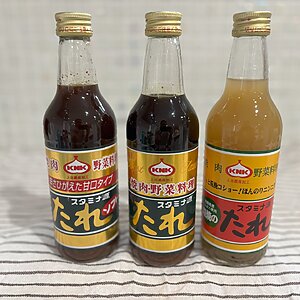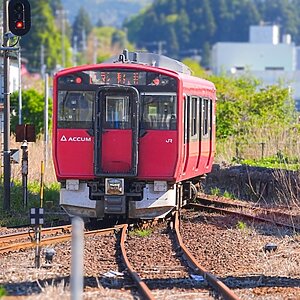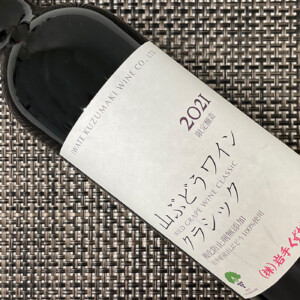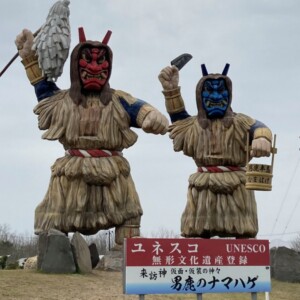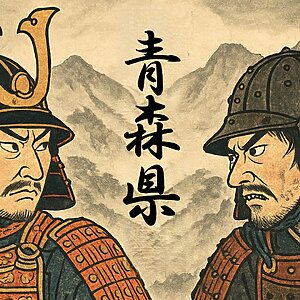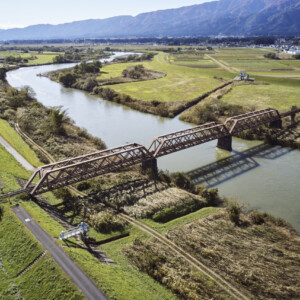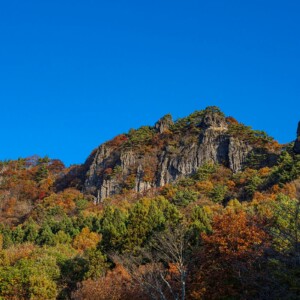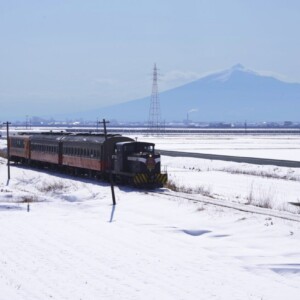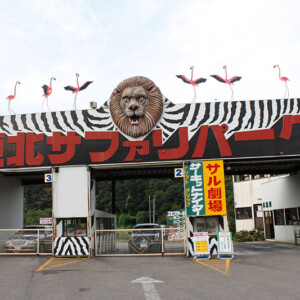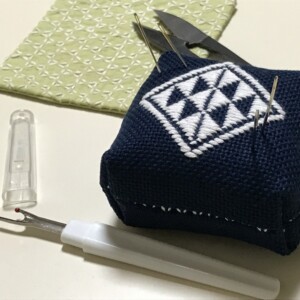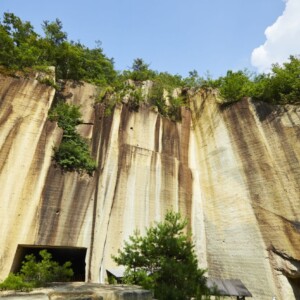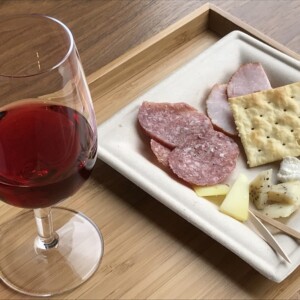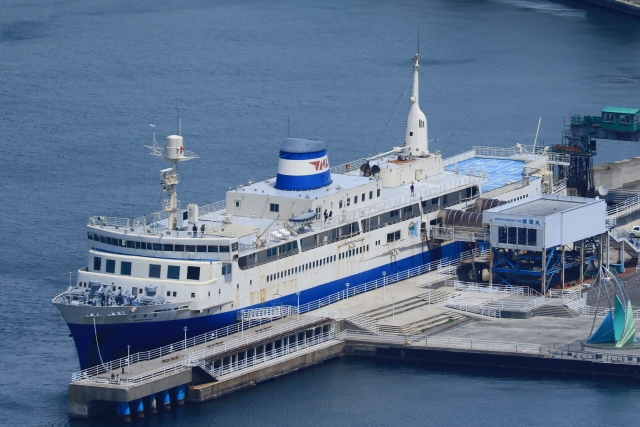
I read the picture book "I Got on the Train" [Aomori Prefecture]
table of contents
The picture book " I Got on a Train " is the 13th volume of the "Kumata-kun's Picture Book" series, written by the late Shigeo Watanabe and illustrated by the late Yasuo Otomo.
The story tells of Kumata-kun and his son crossing the strait on a ship that is (highly likely) modeled after the Seikan Ferry that once operated
Although I had read several picture books about Kumata-kun, I only learned about the story of the ferry after I became an adult and had children of my own.
In this article, I will share my thoughts and observations after reading this picture book
*Occasionally, statements such as "different from reality" appear, but we would like to make it clear that this is simply to clarify the fact that it is different from the real world we live in and is not intended to be critical
Sleeper express "Mangetsu" bound for Kumamori
When you open the picture book to the title page, you will see a blue passenger car being pulled by a blue electric locomotive labeled
EF65 1098. The front of the locomotive has a headmark that reads Full Moon
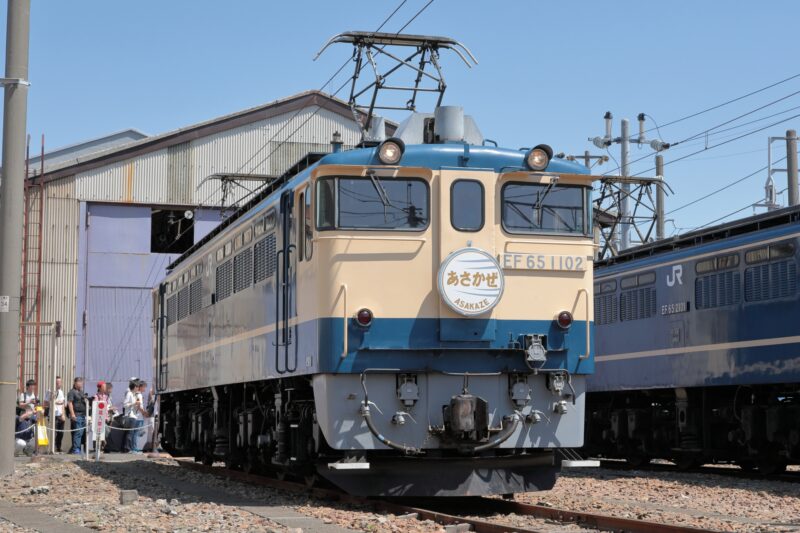
Kumata-kun and his son wake up in the car of the sleeper express "Mangetsu" bound for Kumamori
Given the station name "Kumamori" and the fact that you transfer to a ferry bound for "Kumadate" there, Kumamori Station is clearly modeled after Aomori Station.
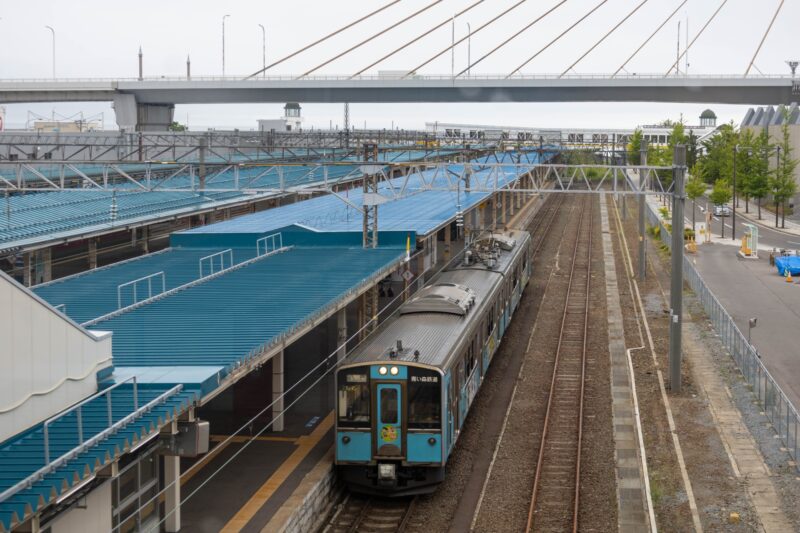
Kumata-kun and his son are taking a sleeper express train to Aomori and then changing onto the Seikan Ferry bound for Hakodate, Hokkaido, following the same route as described in the lyrics of Tsugaru Kaikyo - Winter Scenery
called the Full Moon doesn't actually exist , and it's unclear whether there is a train model for it.
At the time this picture book was published, sleeper express trains that actually had Aomori Station as their destination included the Yuuzuru , Hakutsuru , and Akebono (all departing from Ueno Station in Tokyo), and the Nihonkai (departing from Osaka Station).
Also, there were trains at the time, or in the past, that had names related to stars, such as " Venus ," " Galaxy Subaru " " Comet , Star the only train nicknames I can think of that are related to the moon are " Moonlight " and " Evening Moon
I'm not sure if there were any readers who wanted to read about a trip on this sleeper express train called the Full Moon! The next volume in the Kumata-kun picture book series, volume 14, is called " I Took the Blue Train ," and it's about Kumata-kun and his family riding the Full Moon.
This is a picture book that I have been reading since I was a child, and I plan to write an article about it at a later date. (As an aside, the story "Kumata-kun's Car" in volume 12 was written in response to a comment from a reader who saw the car that Kumata-kun's family made in volume 7, "I Went Camping," and said, "I'd like to read the story of when they bought this car.")
The illustration of the Full Moon train features things that would never be seen on the actual sleeper express train bound for Aomori. I will discuss this in a later article
Ferry "Shirokuma Maru"
When Takuma-kun gets off the sleeper express train at Kumadate Station, he a ship as big as a building . Of course, this ship is modeled after the Seikan Ferry, and since the underside of the hull is blue, he thinks it is the Mashu Maru
Hakkoda Maru , preserved in Aomori City, is yellow.
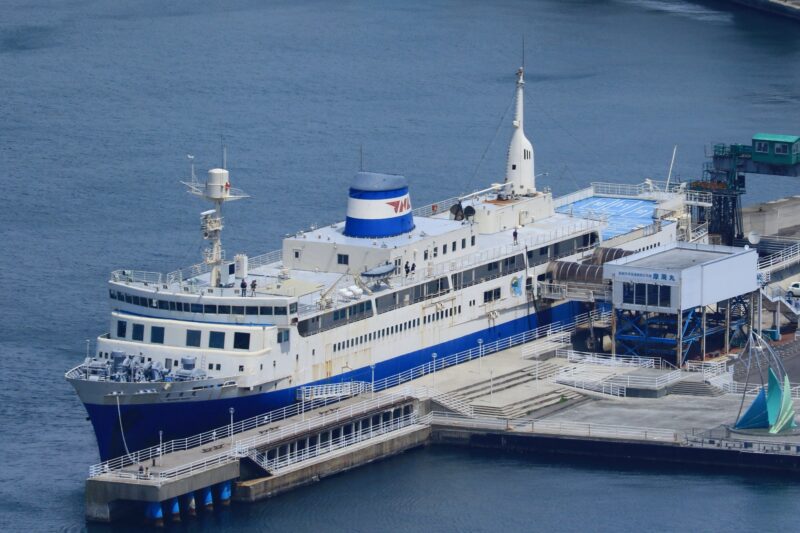
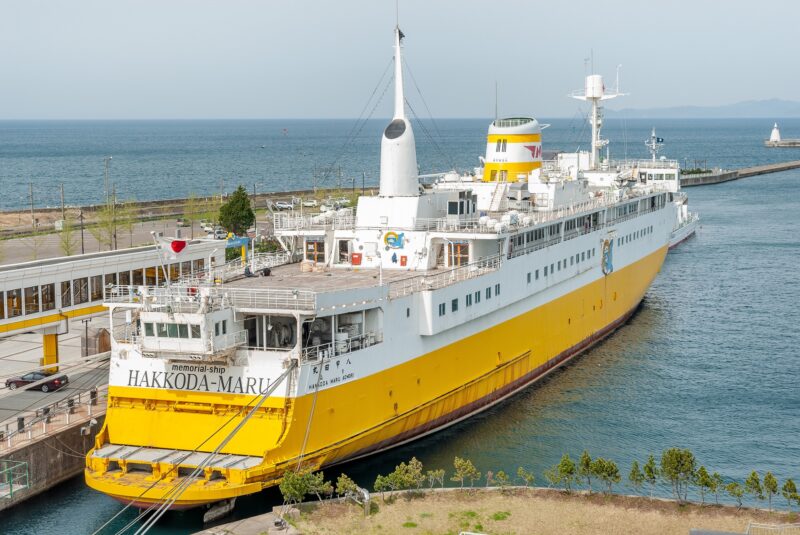
The Seikan Ferry is a rail ferry that ran between Aomori Station and Hakodate Station in Hokkaido for 79 years, from 1908 to 1987. It was capable of carrying people and cars, but there were two major differences between it and regular ferries.
One reason is that it was treated like a JNR/JR train, with passengers being able to transfer from trains at Aomori Station or Hakodate Station without leaving the ticket gates and fares being calculated together with other JNR/JR lines .
Another thing is that the ship was loaded with rail cars (mainly freight cars) .
For more information about the Seikan Ferry, please see the article below
Spacious interior
After breakfast, Kumata-kun and his friends move to the lively floor where the convenience store is located
In the shop, there is a poster that reads Big Way! Kumakaido, it is a depiction that makes no attempt to hide the fact that the ferry was modeled after the Seikan Ferry Shishimaru Takeshi ?" As his last name suggests, the captain is a lion.
In the spacious tatami-covered cabins, many passengers spend their time doing various things, such as playing the guitar, reading books, and playing cards. The spaciousness of the interior is a feature unique to ships that It is said that the Seikan Ferry was "the most luxurious of all the Japanese National Railways' vehicles
explains to Kumata the ship also carries freight trains
The picture shows the entire ship, and the " JR " logo is on the chimney and the freight cars loaded on board (I don't know the details, but aren't logos like this generally fictitious...?).
The Japanese National Railways was split up and privatized, and the various JR companies were established in April 1987. However, the Seikan Tunnel opened in March 1988, and the Seikan Ferry was discontinued. This means that this picture book is based on the one year period when .
The freight train cars are stored on the carriage deck, which is on the lower level of the ship. As Dad explained, passengers on the ferry could not see the freight cars on board
However, at the Hakkoda Maru, which is currently preserved in Aomori, it is possible to enter the interior deck and view the preserved railway cars
The Mashu Maru is preserved in Hakodate, and while it is not possible to enter the vehicle deck, it can be viewed using a remote-controlled camera
Dad explains to Kumata , "The captain is driving this ship from the bridge, which has the best view ." But even if it's good that the captain is on the bridge, does he actually drive the ship as Dad explains and as depicted in the picture?
The author believes that the actual driving (steerage) is the job of the helmsman or navigator
In addition, the freight trains on board are a mix of large and small freight cars, giving the trains a slightly similar feel to those used in the days of the Japanese National Railways (specifically, before the reshuffling of freight trains at marshalling yards was abolished in February 1984)
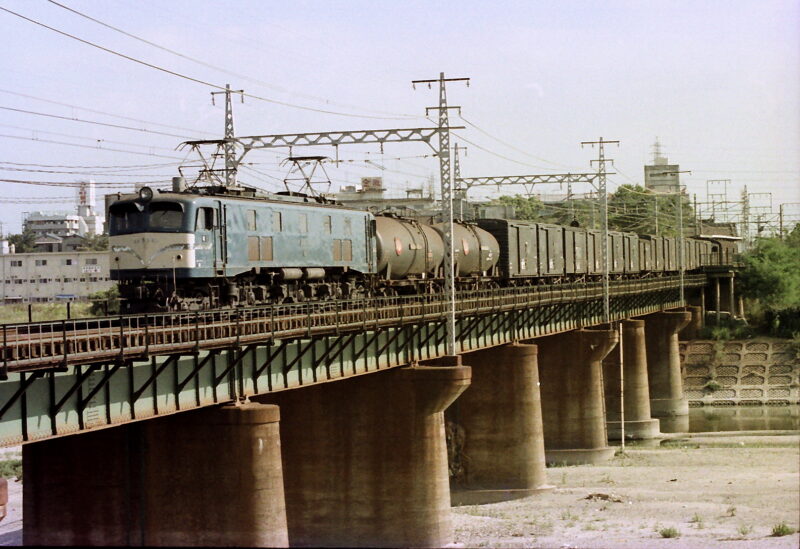
Gohachiyasu1214 – Own work, CC BY-SA 4.0,
https://commons.wikimedia.org/w/index.php?curid=75568932
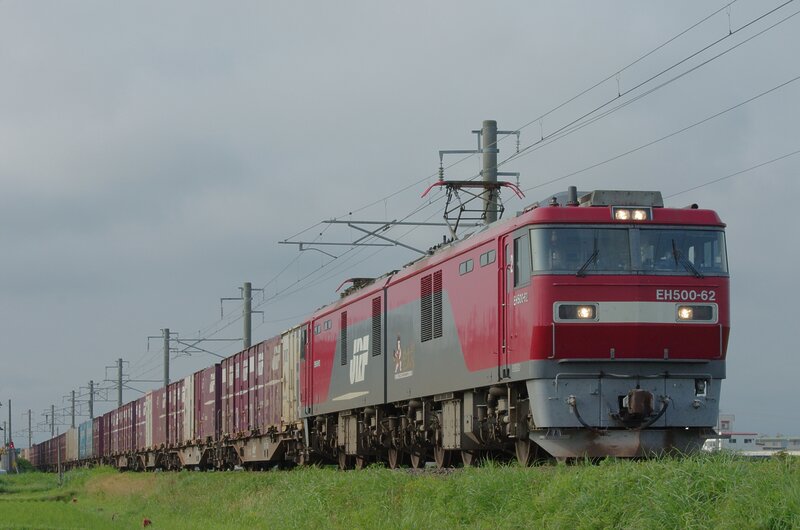
Which flight did Kumata-kun and his family take?
So, which ferry did Kumata and his friends board? There are three clues
First, the setting is sometime between 1987 and 1988 (judging from the clothing of the animals, it doesn't seem to be summer) breakfast is eaten after boarding the boat , and the clock in the room where the guests are playing guitar and playing cards shows the time as 8:35
I don't have a timetable for the exact time period, but according to a timetable from November 1986, just over a year before the Seikan Ferry was to be discontinued, the morning Seikan Ferry services were a 5:25am departure from Aomori and a 9:15am arrival in Hakodate (service 21), and a 7:30am departure from Aomori and a 11:20am arrival in Hakodate (service 23)
The description that fits the description of boarding the ship, having breakfast, and then strolling around the ship afterwards until it was 8:35 flight 23, which departs Aomori at 7:30 .
However, the night train to Aomori that you can transfer to on Flight 23 is called Hakutsuru No. 1 (departing Ueno at 10:20 PM and arriving in Aomori at 7:15 AM via the Tohoku Main Line), and it is not the Blue Train depicted at the beginning of the picture book, but rather a train using the 583 series.
The train that can be transferred to flight 21 is also the 583 series " Yuzuru 1 " (departing Ueno at 7:50pm and arriving in Aomori at 5:08am via the Joban Line).
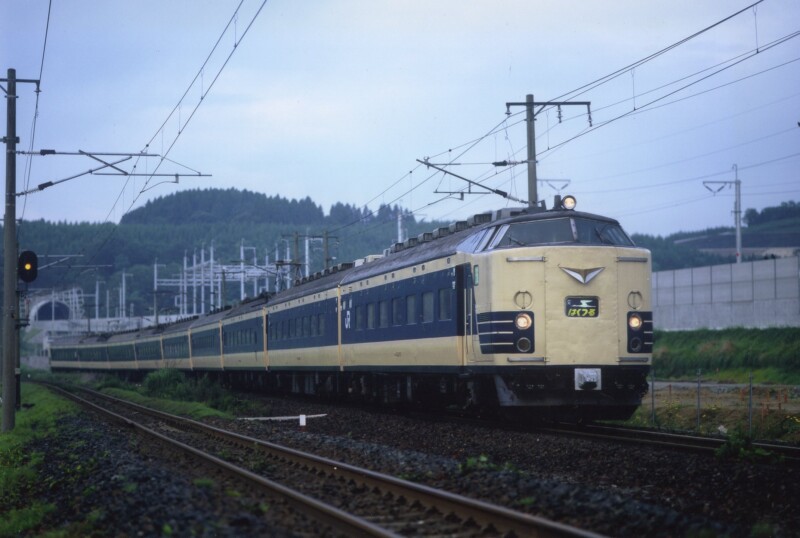
Either way, the description in the picture book does not match the real diamond, but we have no choice but to understand that it is merely a fictional story
In the first place, Kumata-kun and his friends are traveling from "Kumamori" to "Kumadate," not from the real Aomori to Hakodate (although this seems to completely contradict the speculation so far).
Passing by Higumamaru
After encountering a pod of dolphins and passing through an area where the sea is divided into three bands, the Shirokuma Maru passes another ferry, the Higumar Maru (the kanji for its name is unclear as it is not possible to read it from the picture), which is painted white and orange.
This ship is probably modeled after the Towada Maru
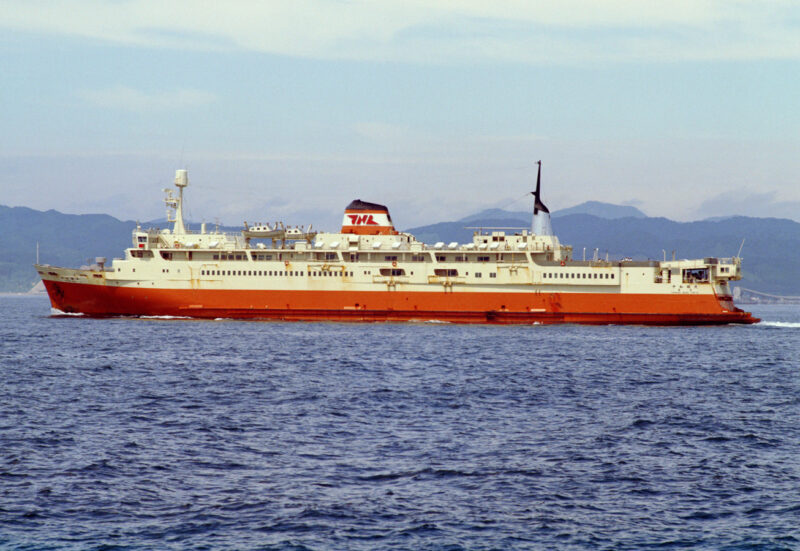
by Akoihsin – Own work, CC BY-SA 4.0
, https://commons.wikimedia.org/w/index.php?curid=41667034
According to the timetable, there is a flight (6) departing from Hakodate at 10:10 and arriving in Aomori at 14:05, so if we assume that the flight passed by at around 10:45, it would make sense
By the way, as you can see from this picture of ships passing each other, the international rule is to keep to the right when ships pass each other.
In Japan, cars and trains drive on the left side of the road, but even ships that connect Japanese ports and only pass through Japanese territorial waters must follow international rules and keep to the right (note that the center of the Tsugaru Strait is international waters, so the Seikan Ferry is not a "ship that only passes through Japanese territorial waters")
This also applies to aircraft
Meanwhile, Shirokumamaru arrives at Kumadate. The picture book ends with Kumadate saying, I came on the train, right, Dad?
in conclusion
" I rode on the ferry " was published in September 1987, and the Seikan Ferry was discontinued about six months later.
I'm sure some of the children who read the picture book were inspired to try riding the ferry, but I wonder what percentage of them actually got to ride the Seikan Ferry
At the beginning of the book, author Watanabe Shigeo writes, "In travel and in life, speed is not the only thing that matters. If you don't move slowly, you will miss out on what is important."
He then added, "This time, I've decided to let Kumata and his family enjoy a relaxing boat trip." Indeed, the dolphins in the strait and the three-colored ocean belt are things you can never see on the Hokkaido Shinkansen, which currently runs through the undersea Seikan Tunnel . I couldn't help but nod in agreement at the artist's words.
In today's society, it's becoming increasingly difficult to take a leisurely cruise. The bullet train and air routes have improved considerably, and even high-speed ferries are now operating on the ocean. However, there are things you can't see or experience unless you take a leisurely cruise
Fortunately, ferries still operate between Aomori Port and Hokkaido. Also, it takes less time to travel to Oma Town in Aomori Prefecture, famous for its tuna, by ferry from Hakodate City than by land from Aomori City
It might be a good idea to incorporate a boat ride into your travel itinerary from time to time


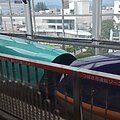


![[Shimokita Peninsula, Aomori Prefecture] Geopark Shimokita Peninsula. A rich hot spring springs from the northernmost peninsula of Honshu 24734759_m](https://jp.neft.asia/wp-content/uploads/2023/02/24734759_m-150x150.jpg)
![The mysterious world of the Shimokita Peninsula of Geopark: "The northern limit of monkeys on Osoreyama and Butsugaura" [Aomori Prefecture] 25110883_m](https://jp.neft.asia/wp-content/uploads/2022/11/25110883_m-150x150.jpg)
![The gorgeous "Noheji Gion Festival" and Kitamae Ship port call "Noheji" [Aomori Prefecture] 4031_Noheji Gion Festival](https://jp.neft.asia/wp-content/uploads/2023/03/27d8816076df6701eb2d6ec6c91e5169-150x150.jpg)
!["Yaki Ikadori" is famous for its squid curtains! Many repeat customers are coming to the condensed flavor [Aomori Prefecture] 1088_Squid Curtain](https://jp.neft.asia/wp-content/uploads/2018/11/621b49eff7eed2fb8caee235a00963e0-150x150.jpg)
![[Aomori Prefecture] Not just food! Shining techniques from Tohoku! 5 selections of craft souvenirs 1 Tsugaru lacquer](https://jp.neft.asia/wp-content/uploads/2021/11/832bdccffb961dac52ac9e3b69594280-150x150.jpg)
![[Aomori Prefecture] How cold is it in Aomori? Introducing cold weather measures for your winter trip to Aomori! 25097708_m](https://jp.neft.asia/wp-content/uploads/2023/02/25097708_m-150x150.jpg)
![[Aomori Prefecture] Let's go on a journey to see clay figures! Introducing highlights and spots! doguu1](https://jp.neft.asia/wp-content/uploads/2023/02/doguu1-150x150.jpg)

